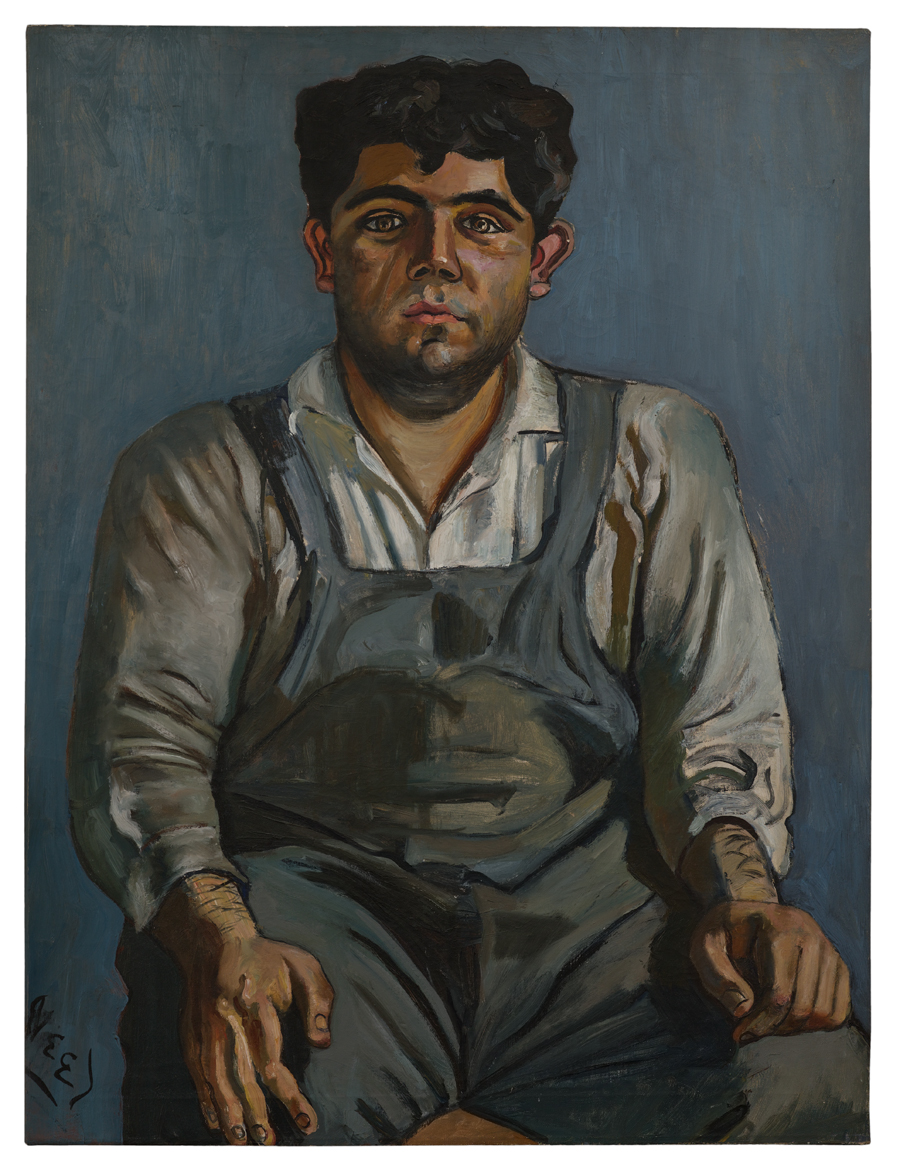Alice Neel
Aurel Scheibler, Berlin, Germany
Aurel Scheibler, Berlin, Germany

The Great Society was a set of measures announced by President Lyndon B. Johnson in early 1964, just a few months after he took office. With his vision of greater social justice and solidarity, a focus on combatting poverty, reforms in healthcare and education and a strengthening of civil rights, the Democratic President echoed the politics of the New Deal of the 1930s, with which Franklin D. Roosevelt had tried to remedy some of the economic and socio-political upheavals of the Great Depression. What links this 1960s reform package and The Great Society (1965), a painting by Alice Neel that features in a solo exhibition of the same name at Aurel Scheibler? The picture shows the interior of an Upper East Side café that was a five-minute walk from Neel’s live-in studio at the time: in the foreground, a small group of elderly people sit around a table, while in the background a hunched waiter sets or clears another. Everything seems to say: the postwar prosperity that was beginning to ebb in other parts of the city when this picture was painted never made it this far.

This café scene plays a pivotal role within Neel’s oeuvre. Thematically, it recalls the socially committed street-scenes that she painted in the 1930s, evinced here by The Cafeteria (1938), which places an emaciated old woman at the centre of a coffeehouse. In aesthetic terms, however, The Great Society has more in common with the keenly observed and stripped-down psychological portraits of artists, curators, critics and members of Neel’s family that dominated her output from the late 1960s to the early ’80s. It is these late portraits (like Andy Warhol’s, made in 1970) that secured Neel’s reputation as a master of contemporary portraiture and allowed her, in the midst of a crisis of figurative and realistic painting, to redefine the genre and claim her place in art history as an outsider.
Neel’s older works have come to resemble documents from a long-gone aesthetic and political parallel universe, reflecting her lifelong sympathies for leftist intellectuals, organized communists, unionists and workers. Seen today, the artist’s solidly leftist (but undogmatic) position seems to jar against that of the smooth, art-business mentality of the present. Hung side-by-side, the small Berlin exhibition includes three portraits from the 1950s, a decade that went down as the McCarthy era and was marked by anti-Communist conspiracy theories: Mike Gold (1952) shows Itzok Isaac Granich, a Communist literary critic and journalist who wrote a column in the Daily Worker, a newspaper published by the Communist Party USA between 1924 and 1958; Sid Gotcliffe (1958), the eponymous British-born painter who worked as a proponent of socialist realism in New York; and Grimaldi (1955), a powerfully built young man in work overalls from the Spanish Harlem neighbourhood where Neel lived and worked between 1938 and 1962.

p.p1 {margin: 0.0px 0.0px 0.0px 0.0px; font: 11.0px Helvetica}
The first painting that you encounter at Aurel Scheibler, Death of Mother Bloor (c.1951), depicts the memorial service of Ella Reeve Bloor, a political activist who sat on the central committee of the Communist Party USA between 1932 and 1948 and organized strikes on behalf of American miners, steelworkers and political prisoners, amongst others. Bloor’s funeral was held in the St Nicholas Arena boxing hall, New York, in 1951, featured speeches from the likes of singer, actor and activist Paul Robeson, and was attended by hundreds of people from a variety of social and ethnic backgrounds. For a contemporary viewer, the painting tells a many-layered story about conflicts within society and a culture of resistance; about political winners and losers; about the power of social memory and the danger of forgetting.
Translated by Nicholas Grindell
Alice Neel at Aurel Scheibler, Berlin, runs until 3 February. Main image: Alice Neel, Longshoremen returning from Work, 1936, (detail), oil on canvas, 77 x 99 cm. Courtesy: © The Estate of Alice Neel and Aurel Scheibler, Berlin
























